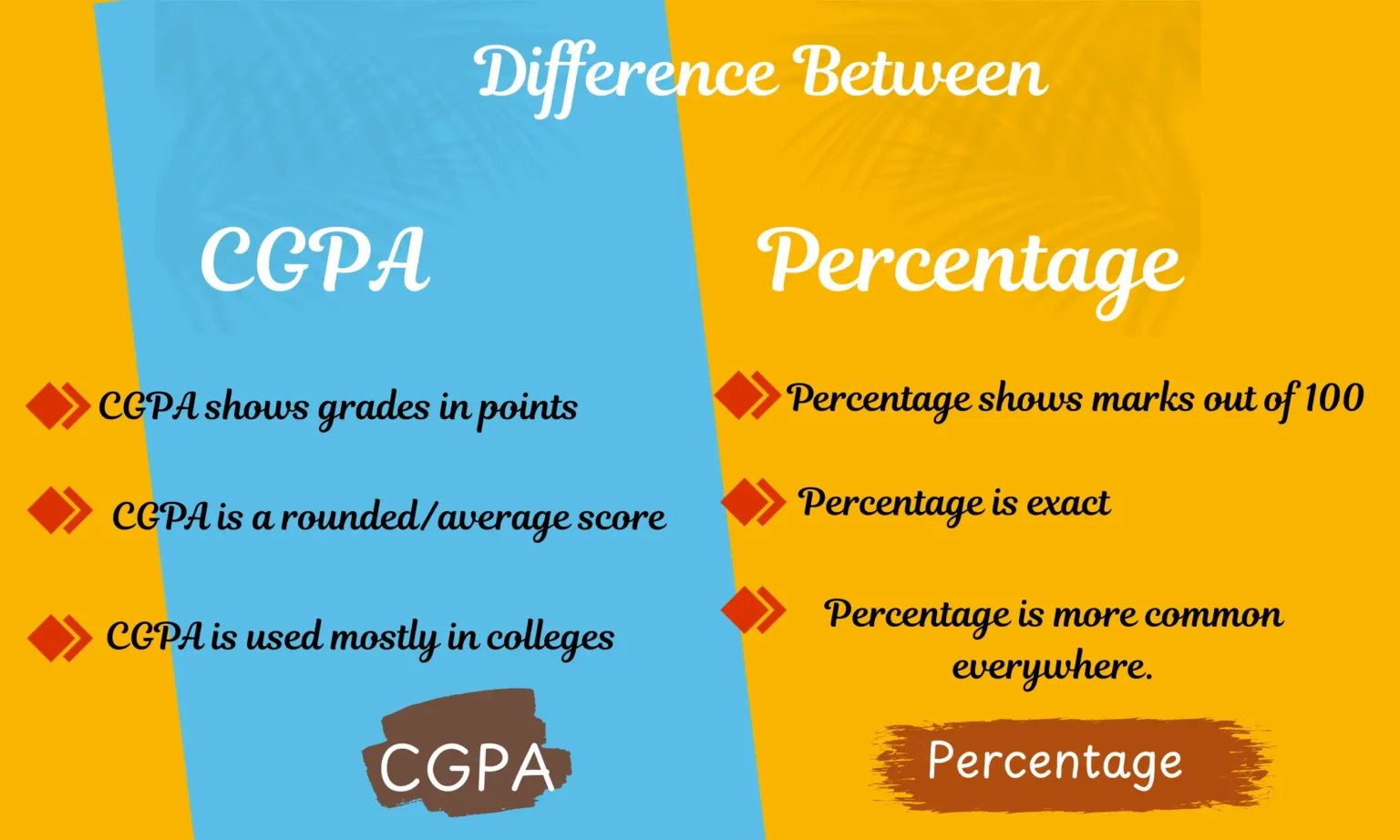I’ve seen this happen countless times. A friend of mine once applied for a local government scholarship, but her result card only had CGPA. She had to Google formulas at midnight to convert them into percentages, worried she’d mess it up.
On the other hand, another friend applying for a Canadian university almost did the opposite. He was about to write his percentage instead of CGPA until I stopped him. So, the confusion is real. You can explore further to strengthen your concepts.
What is CGPA?
Cumulative Grade Point Average is the full form of CGPA. This explains your performance in all semesters. Nothing is difficult.
- On a 10-point grading scale, you can get 9.8 CGPA.
- On a 4-point scale (used in the US and Canada), that might look like a 3.5 or 3.6 GPA.
It’s basically a summary. Instead of saying “I scored 467 out of 500,” you just say “9.3 CGPA.” Simple and neat.
Why CGPA Works Well
- Less Stress: A single bad paper doesn’t ruin your whole record.
- Student-Friendly: It feels softer and less harsh compared to raw marks.
- Global Standard: If you’re applying to universities abroad, CGPA or GPA is what they usually ask for.
Where It Can Be Frustrating
- Not Transparent: Two people with the same CGPA might have very different actual scores.
- Conversion Hassle: For local jobs, scholarships, or exams, you’ll almost always need to convert it into a percentage.
What is a Percentage?
Percentage is the old-school system and still the most widely understood. It’s just your marks out of the total, expressed as a percentage.
Say you scored 480 out of 600 marks. Here’s your percentage:
(480÷600)×100=80%
That’s so simple. No complications.
Why Percentage Still Rules
- Crystal Clear: Everyone immediately gets what 85% means.
- Standard for Local Use: Almost every government exam, local scholarship, or job application will ask for it.
- Detailed: It shows your exact performance subject by subject.
The Tough Side of Percentage
- Pressure: Every single mark matters, which can be stressful.
- No Cushion: If you bomb one subject, your percentage takes a direct hit.
CGPA vs Percentage: The Core Differences
It is explained further:
| Factor | CGPA | Percentage |
| Format | Grades (e.g., 8.6/10) | Marks in % (e.g., 86%) |
| Stress Level | Lower – one bad mark is absorbed | Higher – every mark counts |
| Clarity | Less transparent | Very transparent |
| Global Use | Common abroad | Rare abroad |
| Local Use | Less common | Very common |
| Best For | Overseas studies, MNCs | Local jobs, exams, scholarships |
How to Convert CGPA Into Percentage
This is the part that trips up most students. Thankfully, it’s not rocket science.
In India, this formula is used in board exams:
Percentage= CGPA × 9.5
Example:
- CGPA = 8.2
- Percentage = 8.2 multiplied by 9.5, which equals 77.9%
Important point: Always check for the respective university or college before using any formula.
Which is worth it in reality?
Now comes the real question which one is more important, CGPA or percentage?
👉 If you’re planning to go abroad for higher studies, CGPA is what universities expect. They deal with GPA/CGPA, not raw percentages.
👉 If you’re applying for local scholarships, government exams, or jobs, Percentage will matter more. Most forms won’t even give you the option to enter CGPA.
👉 If you’re making your CV. The smart move is to mention both. Example:
“CGPA: 8.2 (≈77.9%)”
Hence, it is easily understandable.
Examples
- Hassan’s Case: He’s applying for M.Phil in Germany. 8.7 CGPA is written on his result card. That’s fine, because the German university already knows how to interpret CGPA. No need for conversion.
- Mirha’s Case: She’s applying for a teaching job in her home city. The form clearly asks for a percentage. She has an 8.7 CGPA, which she converts to around 82.6% using her board’s formula.
Same CGPA, but the way they use it depends on where they’re applying.

Extra Insights: Why Some Boards Shifted to CGPA
A few years ago, many boards (like CBSE) moved from the traditional percentage system to CGPA. Why?
- They want the students to just take their studies seriously.
- The main thing is to understand the concepts, not cramming.
- It also made the grading system more in line with international standards.
Techniques to Upgrade Both Your CGPA & Percentage
Whether your school uses CGPA or percentage, the way to boost your performance is more or less the same:
- Consistency Beats Cramming: Don’t leave everything for the last night.
- Focus on Weak Subjects: Even small improvements in a weak subject can lift your overall score.
- Never miss Sessional Marks: Many boards count assignments, projects, and practicals. You can get them with ease.
- Work Smarter, Not Harder: You can make your preparations in a much better way. Instead of cramming, just memorize the concepts.
FAQs
Final Thoughts
At the end of the day, the difference between CGPA and percentage isn’t about which one is superior. They’re just two ways of presenting your performance. For international opportunities, CGPA matters more. For local opportunities, percentage usually has the upper hand. But here’s the most important part: neither number defines you. Whether it’s a 9.0 CGPA or an 85%, they only show your academic side.
